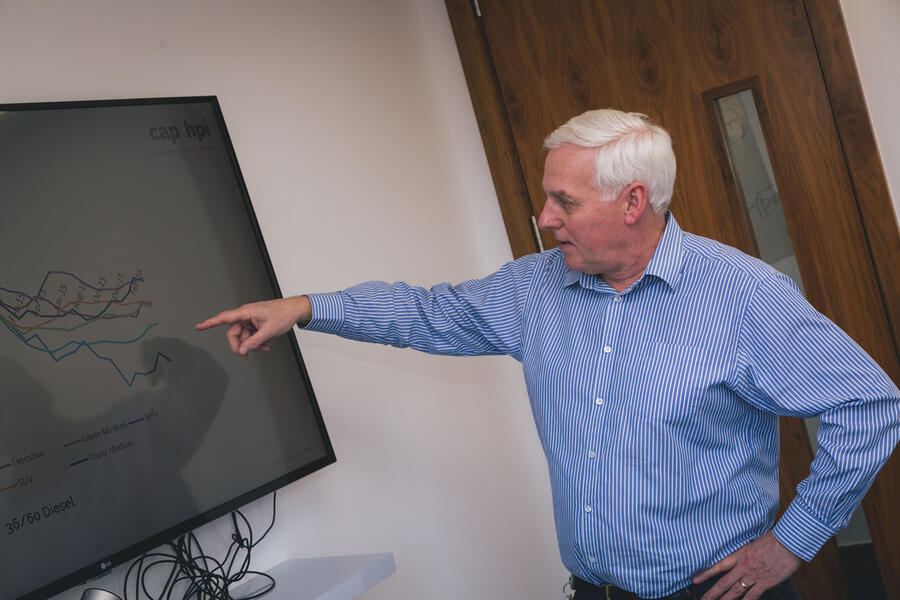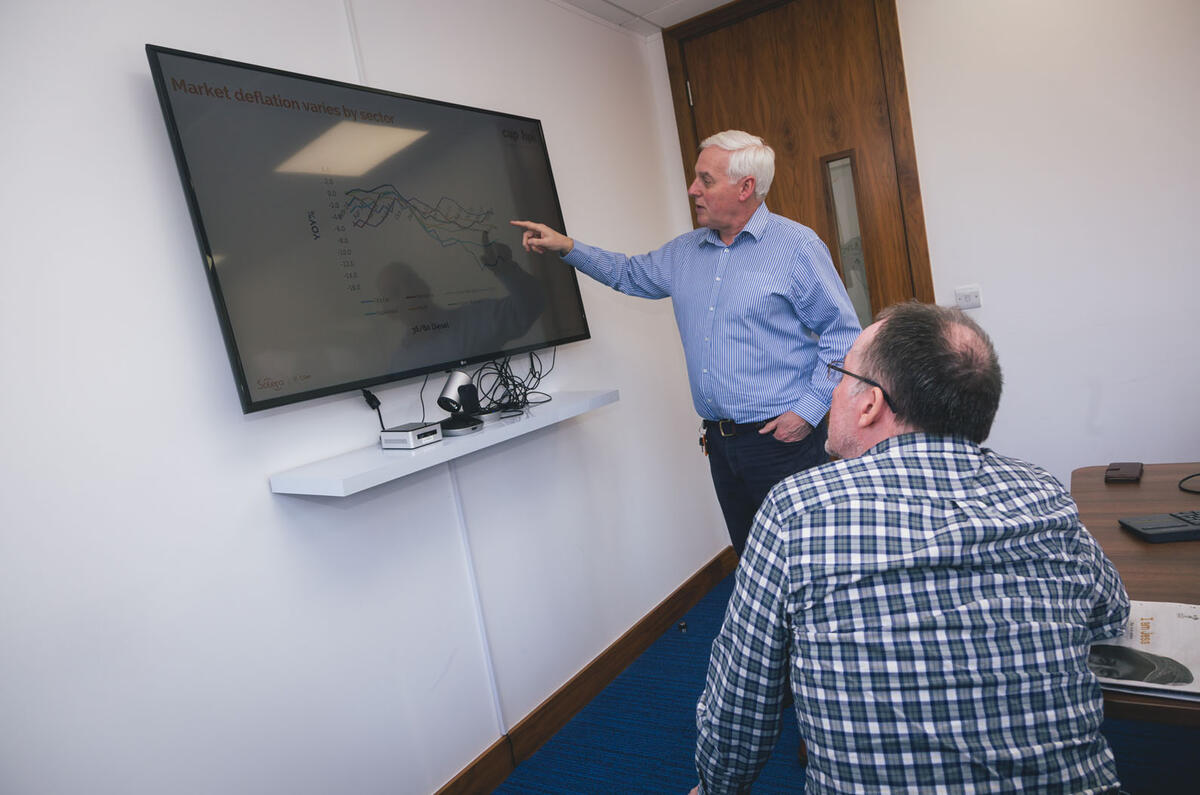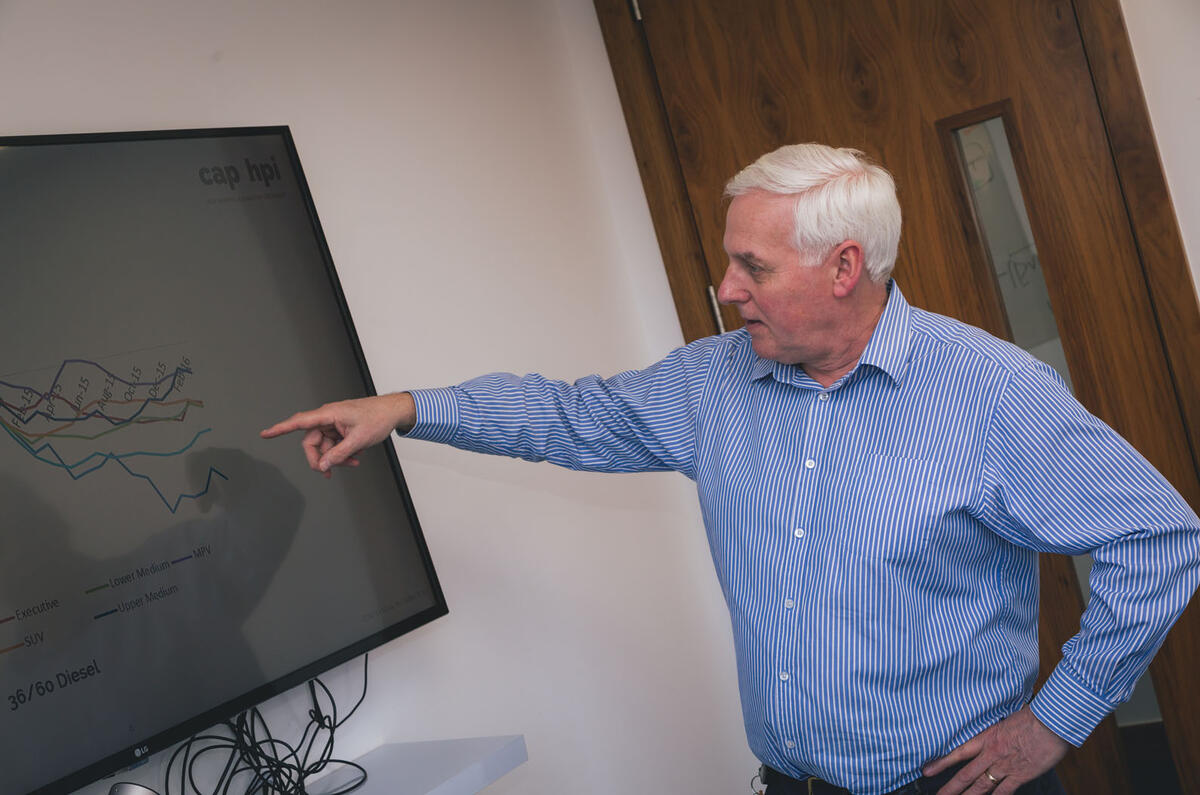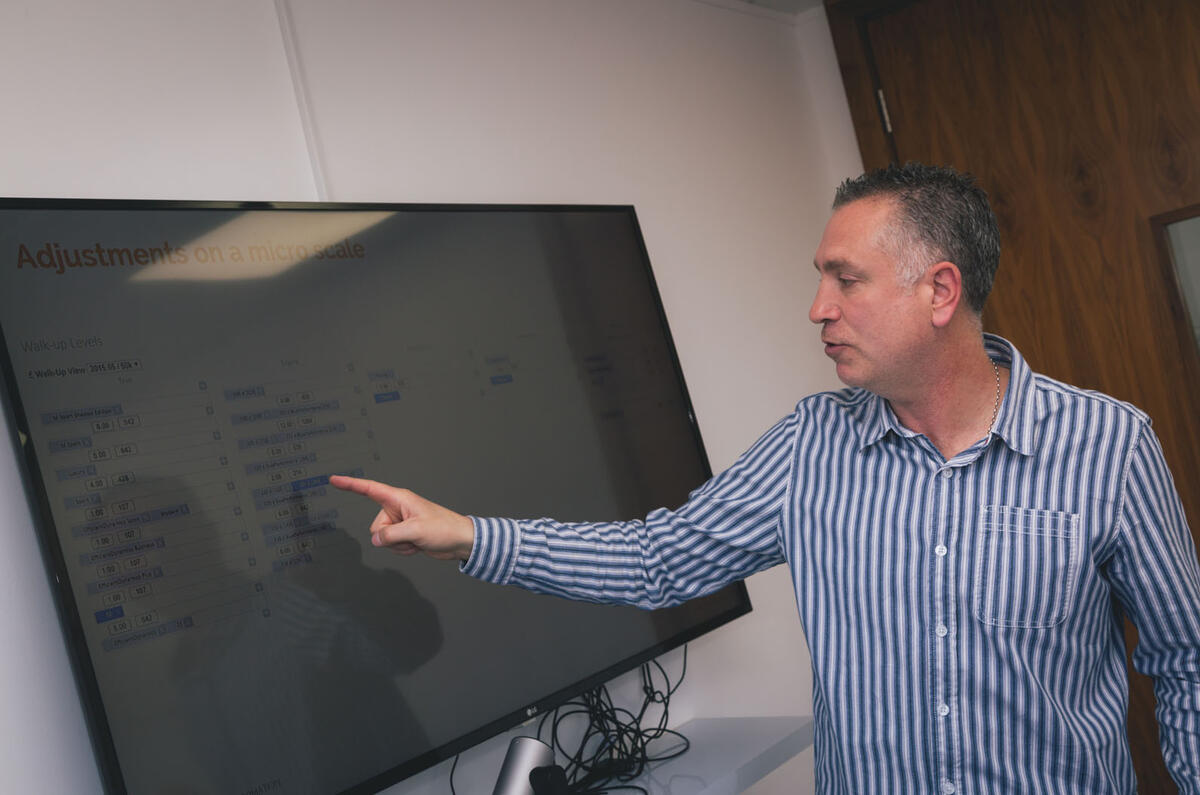In a smart office block in Leeds rest the hopes of millions of car buyers and sellers. It’s here that each day Cap HPI, the vehicle valuation company, processes thousands of buying and selling prices drawn from more than 50 suppliers, including auction groups and car sales websites.
The 160,000 motor trade transactions and 700,000 daily retail adverts the company crunches generate 10 million used car values across 2300 model ranges and in excess of 70,000 model derivatives going back 20 years. It captures price data on two million of the eight million used cars sold each year in the UK. Cap HPI is, it claims, the country’s biggest supplier of used vehicle values.

Is there something a bit Orwellian about Cap HPI and companies like it that claim to know what your car – a vehicle that’s unique in terms of its age, mileage, colour, condition, and service and keeper history – is worth? Are their valuations a self-fulfilling prophecy? And, given how crucial a car’s future value is in determining its monthly leasing cost, are they not under pressure to massage their figures to satisfy car makers and their banks, at your expense?
It’s tempting to find them guilty on all three counts but with the proviso that used car prices are, ultimately, governed by the laws of supply and demand, in addition to other factors, such as how a model is perceived in relation to its peers, its fuel type and where in its life cycle it is. The clearest evidence of these things at work is the auction ring, where Cap HPI, for example, captures a lot of its price data and where, on any weekday, you’ll see thousands of cars sell at breakneck speed to seasoned traders.
True, some of them will be staring hard at their phones consulting online guide values, but most of them already know how much each car will fetch on the forecourt and, crucially, what their competitors are asking for the same models at the same age, with the same options and in the same colours. Working back from that figure gives them an idea of the price they should pay.

The closest that auction bids come to being manipulated is when hand-picked examples of a recently launched model are presented by a car manufacturer to its loyal franchise dealers keen to get their hands on them before anyone else.
As a former car manufacturer executive, Derren Martin, head of valuations at Cap HPI, has experienced more than his fair share of these orchestrated sales, which he describes as “just a piece of theatre”.
What concerns him more are the more discreet tactics that car makers and others deploy to influence the values of their cars. These, plus things such as random price movements that can affect markets, are why he employs a team of specialist editors to scrutinise, interpret and understand the data pouring into Cap HPI’s offices.
Unusual price movements in the order of 3% above or below Cap Condition – a measure that ranks valuations by three condition levels called Clean, Average and Below – are automatically red-flagged by the system. The editors must clear these red and, for lesser movements of 2%, amber lights each day by checking the underlying cause and deciding whether it represents a genuine shift in values or is just a one-off blip. Crucially, the editors are based around the country, so when they’re not putting out lights, they’re visiting dealers and auctions, sourcing data and opinions on the ground.
“We have some very hard conversations with car manufacturers and are regularly asked to explain our figures,” says Martin. “I always tell them we’re simply reflecting the market.”

His colleague Andrew Mee, head of forecasting, predicts where prices will be tomorrow and further into the future. Factors he considers include oversupply, model lifespans and changing fashions, as well as external forces including the country’s future political and economic landscape. His calculations inform the future values finance companies rely on when calculating personal contract purchase deals.
“Of course, there are always surprises,” he says. “For example, in the past couple of years we’ve had to add our own experience of the changing fortunes of diesel cars.”
Not long ago, Cap HPI and its rival Glass’s Guide dominated the car valuation business. Things are different today. Tony Anderson runs Arena Cars, a used car dealership near Aldershot, and he uses neither.
“I use Retail Check, provided by Auto Trader,” he says. “It compares my cars with similar ones and tells me where, price-wise, they sit in the market. It takes into account details such as colour and options. Using it, I’ve had a BMW sell for £1000 more than Cap suggested it would.
“Today, when customers can compare lots of prices at the click of a mouse, the game’s about getting them through the showroom door at prices that are not only competitive but which, for me, reflect the unique appeal and value of each car.”

He must be onto something: after a lot of shopping around, my son’s girlfriend bought a Mini from him.
Karolina Edwards-Smajda, director of commercial products at Auto Trader, says its Retail Check valuation tool for consumers and Retail Accelerator product aimed at dealers draw on Auto Trader’s 450,000 daily used car ads to gauge prices and supply and demand. Their point is that the starting point is a car’s selling price, not its trade price.
“When they’re buying cars, we tell dealers not to focus on the trade price but on what they believe they can sell the car for,” she says. “Calculating what margin they are happy to work with and working back from the selling price gives them the price they should pay.”
Philip Nothard is customer insight and strategy director at Cox Automotive, owners of Mannheim, one of the biggest auction groups in Europe. Does this former Cap HPI editor believe valuation providers rather than market forces determine what a car is worth?
“The motor trade interprets valuations better than it did and has lots of data to cross-refer to,” he says. “In order to get a clearer picture of a car’s real worth, major dealer groups that buy and sell lots of cars supplement guide valuations with their own data relating to specific sales. So no, I believe there are too many checks and balances for that to be the case.”
The last word must go to Edwards-Smajda. Asked who she believes is more accurate, Auto Trader or the traditional valuation companies, she says: “It’s not who is more accurate but, because there are so many variables, who is less wrong.”

Conditional offers
When it comes to checking what your car is worth, that’s something you should bear in mind.
When you go online to find out what your car is worth, behind the scenes the figure is likely to be provided by a used car valuation company such as Cap HPI. It bases its valuations not only on specification, age and mileage but also on external factors such as changes in model supply and demand. To ensure the valuations are as accurate as possible, a team of expert editors checks the data.
A key factor in determining a car’s value is its condition. When you seek an online valuation, you’ll be asked to confirm the condition of your car. For the motor trade, Cap HPI gives a value for each of three condition grades it calls Clean, Average and Below. As cars age, they deteriorate, so the criteria for each of Cap HPI’s grades changes to reflect this. For example, to be judged in Clean condition, a one-year-old car is permitted to have only one area or panel requiring a minor repair. Meanwhile, a three-year-old example is allowed three.
Here are four online companies keen to value your car. To get the most accurate valuation, be honest about the condition of your car:
whatcar.com/car-valuation: Sister website to autocar.co.uk gives guide prices for cars registered since 1998.
clicktobuy.hyundai.co.uk: One of the few sites that gives you a price verging on the car’s trade value.
hpivaluations.com: Powered by Cap HPI, this provider can tell you the price of the car when it was new, plus its private sale price, forecourt price and trade-in value today.
autotrader.co.uk/car-valuation: Shows private sale and part-exchange guide prices for your car.
Read more
Factory fresh: driving the 300,000-mile Ford Mondeo​
Buying a car at an auction - six top tips​
Buy them before we do: second-hand picks for 3 May​

























Join the debate
Add your comment
This is a subject that has
This is a subject that has baffled me for years. How can a decade-old VW Caddy van with 100,000 miles and a bit tatty be worth the same as a decent Ford Kuga? They say supply & demand. Really? I see prices of used Suzuki Jimnys are rising, not falling...and rising by a lot! How come, when there are so many used Evoques, prices are absurdly high? And don't even get me started on the prices of Defenders!
Closed Loops
Much of the car trade is in a controlled loop. Many manufacturers run their own PCP books these days and users return their cars to them at the end of contract or run executive driven pre-registered product into their used supply. They will have their own analysts working out balloon payments based on residual values. They can get caught out by the likes of the GFC or Dieselgate but the millions involved make those third party inputs are less and less important. Supply and demand, is still king, witness the soft values of used Golfs v. a more in demand/less available Corolla.
Regional Pricing
Used car prices vary regionally - partly due to differences in demand and partly due to differences in dealers' costs, eg rent, wages, etc - so how does CAP reflect these regional variations?
Regional variations?
Can you give an example of these regional variations? Are you not confusing the difference between how much a car is worth and the sellling price?
For example a three year old Toyota HiLux 4x4 thingy may cost £20,000 in rural Yorkshire or £19,000 in central Birmingham or £21,000 in Chelsea, but the trade (selling) price will be the same for all three.